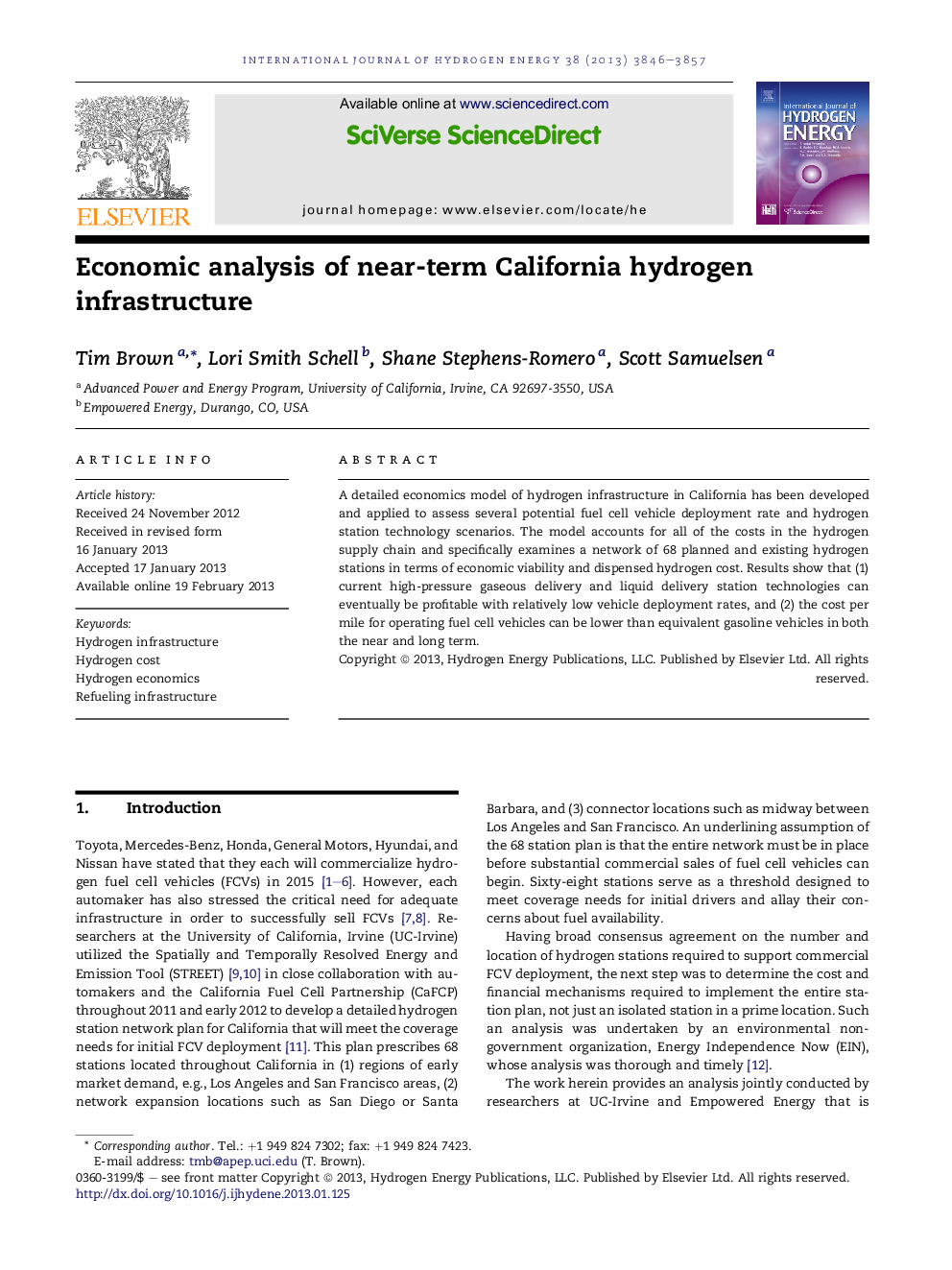| Article ID | Journal | Published Year | Pages | File Type |
|---|---|---|---|---|
| 1281846 | International Journal of Hydrogen Energy | 2013 | 12 Pages |
A detailed economics model of hydrogen infrastructure in California has been developed and applied to assess several potential fuel cell vehicle deployment rate and hydrogen station technology scenarios. The model accounts for all of the costs in the hydrogen supply chain and specifically examines a network of 68 planned and existing hydrogen stations in terms of economic viability and dispensed hydrogen cost. Results show that (1) current high-pressure gaseous delivery and liquid delivery station technologies can eventually be profitable with relatively low vehicle deployment rates, and (2) the cost per mile for operating fuel cell vehicles can be lower than equivalent gasoline vehicles in both the near and long term.
► All hydrogen network scenarios examined are eventually profitable. ► A properly designed hydrogen station network is critical for financial success. ► Station network configurations can be profitable, even with slow FCV deployment. ► Government support continues to be necessary due to required up-front investment. ► With competitive hydrogen pricing, FCV operating cost can be half that for gasoline.
